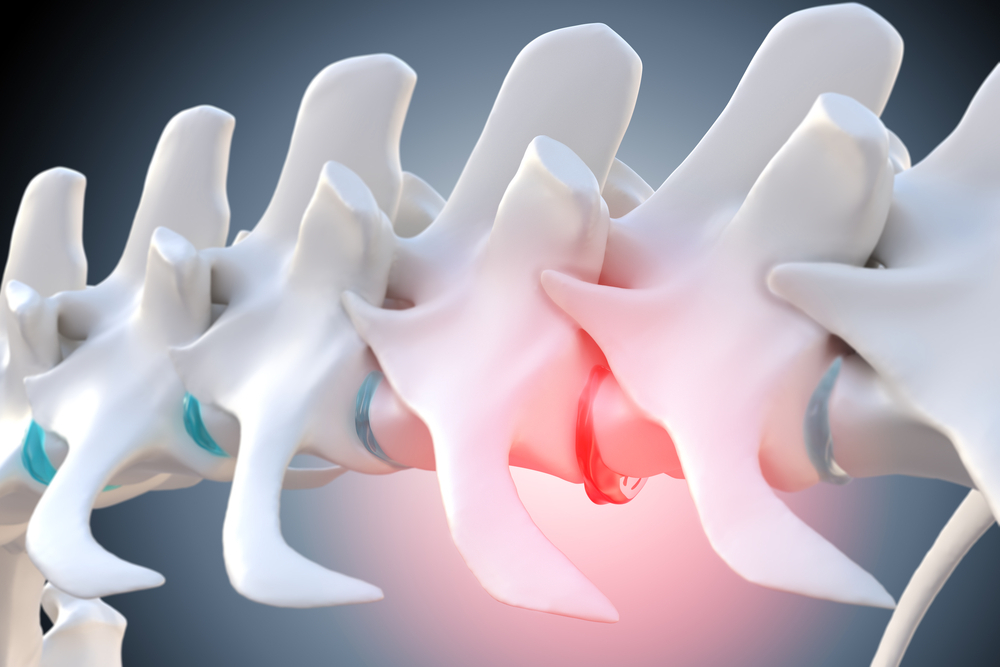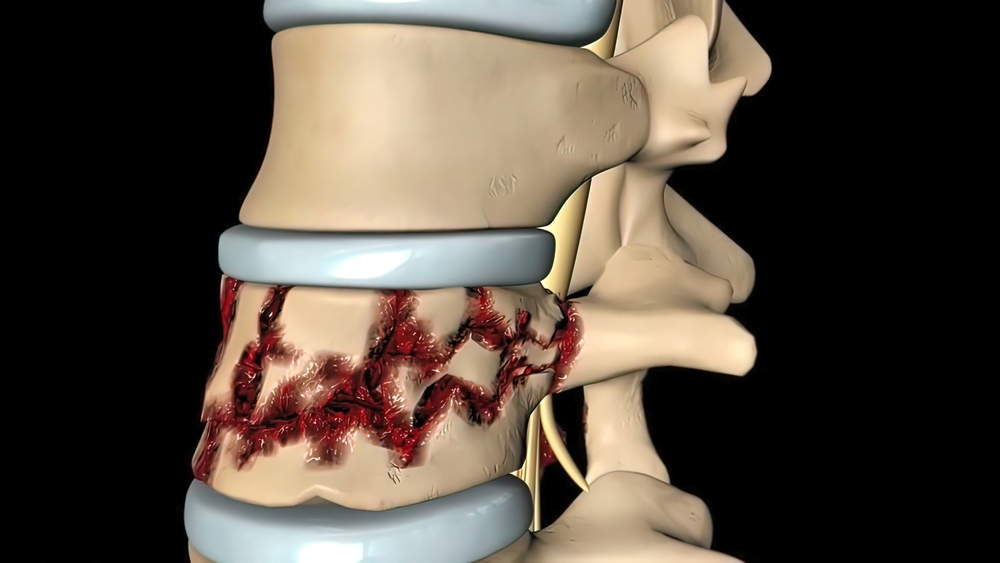What You Need to Know about Vertebral Compression Fractures
If you are experiencing severe back pain, it’s essential to get checked out by a doctor. You may have a vertebral compression fracture, a common type of broken bone. Here, we will discuss the symptoms of compression fractures and diagnosing vertebral compression fractures, how they are diagnosed, and their treatment options.
Introduction To Compression Fracture
The term “compression fracture” refers to a condition in which a vertebral bone has lost its average height due to a fracture; it is most commonly caused by osteoporosis.
These compression fractures can happen in any vertebrae, although they happen most frequently in the upper back (thoracic spine), specifically in the lower vertebrae of that spine. Compression fractures can happen anywhere in the spine’s vertebrae (e.g., T10, T11, T12). Above the level of the seventh thoracic vertebra, they are pretty uncommon. They frequently manifest themselves in the upper lumbar segments, such as the L1 region.
Fractures of the Spine are Very Common. It is estimated that over 700,000 persons in the United States suffer from spinal compression fractures each year due to osteoporosis.
The issue is that the fracture is not often recognized as being present. Consequently, it is not always diagnosed correctly. Instead, the patient’s pain is often thought of as a general ache that might be caused by a muscular strain or another injury to the soft tissues. The aging process may bring about this as a natural result.
It can cause a problem because the fracture is a common cause of back pain. Consequently, roughly two-thirds of the spinal fractures that happen each year are not detected, and consequently, they are not treated.
Types Of Spinal Fractures
There are different types of spinal fractures, each with its symptoms and treatment options. The most common kind of spinal fracture is the vertebral compression fracture. This type of fracture occurs when bones in the spine collapse due to a traumatic injury or loss of bone density.
It can be the most typical type of spinal fracture; another type of fracture is,
-
Crash Fracture
A crush fracture is a type of bone fracture that occurs when
-
Burst fracture
This particular type of vertebral fracture is characterized by a reduction in height on both the vertebral body’s anterior and posterior walls (rather than just the front of the vertebra). It is essential to make this distinction because burst fractures can be unstable, leading to progressive deformity or neurologic impairment if not treated properly.
-
Spinal compression fracture from fall
A spinal compression fracture from a fall is a medical emergency. If you think you have this type of fracture, you must see a doctor immediately. Treatment will likely include rest, pain medication, and physical therapy.
You may need surgery if you have a spinal compression fracture from a fall and your spine is unstable. Surgery will involve placing metal rods or other devices in your spine to stabilize it.
Furthermore, it can be a severe injury, and you should immediately see a doctor. There are a few different types of treatment, which will be based on the severity of your case.
Effects Of Vertebral Compression Fractures
A vertebral compression fracture (VCF) is a type of spine fracture that happens when the bones of the spine break. This fracture can happen due to osteoporosis, trauma, or other conditions. The most typical symptom of a VCF is sudden, severe back pain. Diagnosing vertebral compression fractures is sometimes very difficult.
Pain From Compression fracture
Compression fracture pain typically starts suddenly. The pain is usually worse with activity or standing and improves when lying down. It happens because when you are upright, the weight of your body puts more pressure on the fractured vertebrae. Lying down takes the pressure off the fracture and can help to ease the pain. The pain from compression fracture ranges from low to severe form of pain.
Effects of compression fracture
In addition to pain, compression fractures can also cause:
- Limited mobility
- Difficulty standing up straight
- Kyphosis, or rounding of the shoulders
Diagnosing vertebral compression fractures is hard because they look similar to other conditions. And their symptoms can look alike. But with a complete examination and proper test, it can be diagnosed.
Cause and symptoms Of Vertebral Compression Fractures
Simple daily movements like stepping out of the shower, sneezing hard, or moving a light object can produce a VCF in persons with severe osteoporosis (weak, brittle bones). When someone with moderate osteoporosis falls or tries to move anything too heavy, the extra strain might produce a vertebral compression fracture.
About 750,000 people yearly are diagnosed with osteoporosis and suffer from a vertebral compression fracture (VCF), the most prevalent type of fracture in these patients. About one in four American women past menopause develops a vaginal complication due to VCF. About 40% of women aged 80 and over live with this illness, and the prevalence rises progressively as people age. VCFs are a significant health risk for older males while being far more common in women.
The likelihood of a second osteoporotic VCF is five times higher in people who already have one. A VCF can exist with either no symptoms at all or very mild symptoms, but this does not eliminate the possibility of further occurrences of VCFs.
In most cases, a VCF happens to a person with a healthy spine because of a traumatic event.
Patients under 55 with no or minor trauma history should have metastatic tumors evaluated as a possible cause. Many malignancies tend to spread to the vertebrae of the spine. Vertebral collapse may occur if cancer destroys enough of a vertebra.
Main Symptoms Of Vertebral Compression Fractures
The following list of primary clinical compression fracture symptoms may be present in patients with VCFs, either alone or in combination:
- Pain in the back that came on suddenly
- An increase in pain when sitting or lying down A decrease in the severity of the pain when sitting or lying down. It Causes Limited spinal mobility.
- Potential shortening over time
- deterioration of form and impairment in due time
These compression fracture symptoms can be an alarming signal of vertebral compression fracture.
-
Osteoporosis
Mostly it is seen as osteoporosis Primary Cause Of Compression Fractures. Vertebral compression fractures are quite prevalent, especially among postmenopausal women, and osteoporosis is the leading cause of these fractures. In addition, it’s more common than most people realize among 40- to 50-year-olds and relatively common among men older than 50.
Injuries to the spine caused by osteoporosis are common even when the force applied is minimal, such as when opening a window, taking a small step backward, or twisting while lifting.
Sneezing, coughing, or turning over in bed are seemingly innocuous acts that can trigger a vertebral fracture in people with advanced osteoporosis.
-
Trauma
Vertebral fractures, both minor and severe, are another possible consequence of spinal trauma. Any incident that pushes the bones in the spine beyond their point of breaking, such as a fall, a violent leap, an automobile accident, or any other kind of impact, can cause this kind of trauma.
-
Cancer or tumor
Vertebral fractures are another possible outcome of cancer treatment for certain patients. The spine’s joints are a frequent target for metastatic cancer migrating from elsewhere in the body.
An unexpected compression fracture in the spine could be the first sign of malignancy that has progressed to the spine but has gone undetected. Doctors should explore patients with hypercalcemia, unexplained anemia, weight loss, proteinuria, cancer, or multiple myeloma.
Diagnosing Vertebral compression Fracture
VCFs can be challenging to diagnose because they often look similar to other conditions, such as osteoarthritis or muscle strain. Doctors would need medical history for it so your doctor may perform a physical exam. Your physician can also do tests like X-rays or CT scans to diagnose the problem.
Diagnosing Vertebral compression fracture
To diagnose a vertebral compression fracture, you visit your doctor first. Your doctor will perform a physical exam. They may also ask you to get some imaging tests, such as CT scans or X-rays, to confirm the diagnosis.
It is challenging to diagnose compression fracture pain because the symptoms are similar to other conditions, such as osteoarthritis or muscle strain.
A vertebral compression fracture is not easy to diagnose as other conditions because,
- The pain from compression fractures is often similar to that caused by other conditions, such as osteoarthritis or a muscle strain. This can make it challenging to diagnose compression fractures based on symptoms alone.
- Compression fractures can often look similar to other conditions on X-rays or imaging tests. This makes it essential to have a doctor who is experienced in diagnosing compression fractures.
Diagnostic Process
The diagnostic process includes:
- A thorough medical history and physical exam.
- Imaging tests, such as X-rays or CT scans, confirm the diagnosis.
- Blood tests check for conditions that can cause bone loss, such as osteoporosis.
After taking the patient’s history, the physician will do a physical examination, looking for evidence of pain or other symptoms.
Treatment Of Vertebral Compression Fracture
After diagnosing a vertebral compression fracture, you must pick a proper treatment. The goal of treatment for vertebral compression fractures is to relieve pain and improve mobility. Treatment options include:
- Rest
- Pain medication
- Physical therapy
- Surgery
Treatment decisions will be based on the cause of the fracture, the severity of symptoms, and the patient’s overall health.
Patients with VCFs often experience significant pain and reduced mobility. The goal of treatment is to relieve pain and improve mobility. Compression fracture treatment options include rest, pain medication, physical therapy, and surgery.
Surgery
It wasn’t until the early 1990s that vertebroplasty was used to treat VCFs in the United States. While most patients can have the surgery as outpatients, those who require hospitalization may have to spend the night. Depending on the number of vertebrae that need to be fused, vertebroplasty might take anywhere from one to two hours to complete. A local anesthetic or general anesthesia may be used to perform the surgery. Under x-ray supervision, a tiny needle is inserted into the compressed vertebra and filled with acrylic bone cement.
The cement will provide much-needed support for the weakened vertebra. Most professionals agree that the mechanical support and stability offered by the bone cement help with the discomfort. Using a balloon to direct the cement and elevate the sagging bone is a variant of this procedure known as kyphoplasty. Cement is used to fill the gaps left by the balloons.
Vertebroplasty and kyphoplasty may be appropriate Compression fracture treatments for patients who meet the following criteria:
Symptoms of moderate to severe pain have persisted for more than two weeks. They have not responded to conservative treatment due to osteoporotic vertebral compression fractures (VCFs) in any spine region.
Cancers like multiple myeloma and metastases can be pretty painful.
Hereditary tumors of the spine that cause excruciating pain (benign, malformed vascular tumors composed of newly formed blood vessels)
This disorder is known as osteonecrosis of the spine (a condition that causes bone death )
Treatment of pathologically weak vertebral bodies by fortifying them before surgical stabilization
Physiotherapy for the treatment of vertebral compression fracture
Many different types of physiotherapy can be used for vertebral compression fracture treatment. The type of physiotherapy used will depend on the individual patient’s needs and preferences. Some common types of physiotherapy include:
- Exercise
- Manual therapy
- Electrical stimulation
- Heat or cold therapy
Exercise is often recommended for vertebral compression fractures. The intensity of exercise will be based on the individual’s abilities.
Manual therapy, such as massage, can help relieve pain and improve mobility. Electrical stimulation and heat or cold therapy may relieve pain and promote healing.
Prevention of vertebral compression fracture
There are some options available to be considered to help prevent vertebral compression fractures. These include:
- Getting enough calcium and vitamin D
- Exercising regularly
- Maintaining a healthy weight
- Avoiding smoking
You must get the proper amount of calcium and vitamin D your maintaining strong bones. Exercise helps to strengthen the bones and muscles and can also help to improve balance. Weight control is an essential factor in reducing bone stress. Avoiding smoking is also important because it can decrease the amount of blood flow to the bones and slow healing.
A healthy weight can help prevent fractures. In addition, keeping a healthy weight as you age is essential because bone loss can make fractures more likely.
– Talking to your doctor about bisphosphonates
Medication known as bisphosphonates has been shown to reduce the risk of bone loss, which can prevent fractures by keeping bones strong. They are often used to treat osteoporosis but may also prevent fractures in people at high risk.
These are a few examples of what can be done to help prevent vertebral compression fractures.
Long-term effects of spinal compression fracture
It’s possible that some people won’t experience any long-term effects at all, while others might experience pain, decreased mobility, and a loss of height. In some cases, the effects of the fracture can lead to more severe problems such as osteoporosis or deformity. Your doctor can tell you the possible long-term effects of spinal compression fractures.
Some people may experience pain from compression fractures for a long time after the initial injury. This pain can vary from regular to severe and interfere with daily activities. Pain medication can help to relieve pain.
Conclusion
Vertebral compression fractures can be painful and cause long-term effects. Your physician can tell the best way to treat your fracture and prevent future fractures. Many alternatives can help reduce the risk of vertebral compression fractures, such as getting enough calcium, exercising regularly, and maintaining a healthy weight.
Smoking can also increase the risk of vertebral compression fractures, so it is essential to avoid smoking. Here we have given you some vital information about vertebral compression fractures, such as diagnosing Vertebral Compression Fractures, pain from compression, compression fracture treatment, and Prevention of vertebral compression Fractures. Long-term effects of spinal compression fracture can also be found in this article.
How can you book an appointment?
We aim to see you within 24 hours so contact us to make an appointment either online at www.primphysiocare.co.uk or to find out more information on how we can help you, please call us on 07515280990 or email us primephysiocareluton@gmail.com. We are one of the best clinics whose physios are registered with HCPC, CSP and Physio first as well have enormous experience.
Frequently Asked Questions
Q. Explain the symptoms of a vertebral compression fracture.
Ans. The most particular vertebral compression fracture symptom is pain. The pain from compression fractures is usually worse with activity or when upright and may improve when lying down. Other symptoms can include a loss of height, deformity, and difficulty moving.
Q. How are vertebral compression fractures diagnosed?
Ans. Vertebral compression fractures are typically diagnosed with imaging tests such as X-rays, CT scans, or MRIs.
Q. What is the treatment for vertebral compression fractures?
Ans. Treatment of compression fractures typically includes rest, pain medication, and bracing. Your doctor can also recommend you have physiotherapy. In some cases, surgery may be necessary.
Q. What are the long-term effects of vertebral compression fractures?
Ans. The long-term effects of vertebral compression fractures can vary depending on the individual. It’s possible that some people won’t have any long-term effects at all, while others will. Experience pain, decreased mobility, and a loss of height. In some cases, the effects of the fracture can lead to more severe problems such as osteoporosis or deformity.
Q. What can be done to prevent vertebral compression fractures?
Ans. You can do many things to reduce the risk of vertebral compression fractures, such as getting adequate vitamin D and calcium, exercising regularly, and maintaining a healthy weight.




